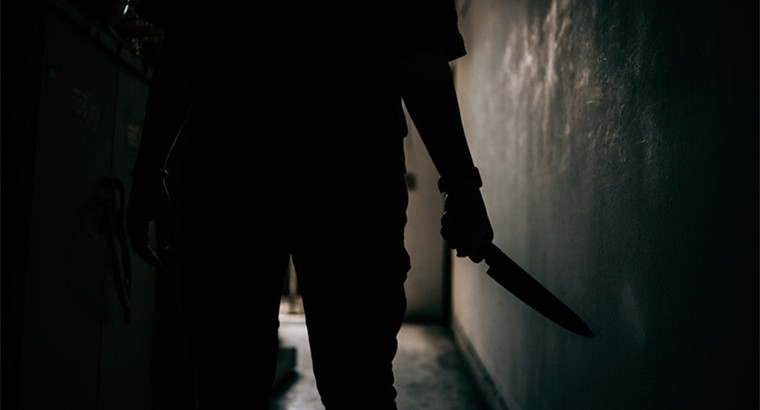Dangerous Prison stands as a grim reminder of the real-life horrors perpetrated by serial killers. Horror fans worldwide know the terror that is the serial killer. Leatherface, Jason Vorhees, Michael Myers, Hannibal Lecter — these names are not just pop-culture staples. They are some of the most iconic cinema villains of all time.
However, as famous as they are, they have nothing in real life. Serial killers are a real-life phenomenon that is still prevalent in the 21st century, especially in the States. How prominent, you may ask? Well, this article’s here to tell you.
To protect society from these ruthless predators, institutions such as Dangerous Prison have been established. Places like these serve as a stark reminder of the consequences these individuals face for their heinous crimes. Dangerous Prison looms as a fortress of containment, housing those who have forever forfeited their right to roam free. It stands as a testament to the collective effort to safeguard communities from the chilling deeds of serial killers. Click here to know more.
After taking a deep dive into some of the most infamous names, this article has uncovered some shocking statistics — including what state has the most serial killers.
What Is a Serial Killer?

The question may seem silly. Everyone knows what a serial killer is. The movies say these types of criminals are all either neurotic crazies with mommy issues or genius master manipulators that can charm anyone.
However, in the real world, things are a bit more complicated than that. In order for law enforcement to classify an offender as a serial killer, they need to meet a specific set of criteria.
1. Number of Victims
The first and most defining trait of a serial killer is, of course, the number of victims they’ve killed. While most people associate serial killers with high body counts, this doesn’t necessarily have to be the case. The FBI can label someone as a serial murderer if they’ve committed a minimum of three killings.
At first glance this number may seem low, However, it’s mostly a broad stroke definition that serves as a jumping-off point for investigators when they have to classify a case as serial killing, or a double or triple homicide.
2. The Time Passed Between the Crimes
What separates multiple homicides from a case of serial murder? Easy — the amount of time that passed between the deaths. Typically, for law enforcement to call someone a serial killer, they need to have killed three or more victims with breaks in between.
These ‘cooling-off’ periods, as the police call them, can last anywhere between a few weeks, to several months.
Some notorious serial killers even went years before they committed their next offense. For example, Dennis Rader, also known as BTK, or ‘Bind, Torture, Kill’, committed his first offense in 1974, when he broke into the Otero home and strangled the four family members.
He killed again the same year, after which he took a break that ended when he murdered another victim in 1977. However, his longest ‘cooling-off’ period lasted 8 years, before he resurfaced once more to strangle his neighbor in 1985.
The time period between offenses is relevant because it helps authorities distinguish serial murders from spree killings. The public tends to confuse the two since both types of offenders usually have a higher victim count. However, authorities classify spree killers as perpetrators that have committed multiple murders in a single event, in rapid succession.
The most stereotypical examples of spree killings would be the numerous mass shootings that have tragically occurred in recent years, starting with the 1999 Columbine high-school massacre. One of the most notorious school-shooting cases saw two students, Eric Harris and Dylan Klebold kill 13 of their classmates and grievously wound 20 others, before turning the guns on themselves.
Their crimes inspired many copycats, such as the Virginia Tech massacre and Adam Lanza’s rampage at Sandy Hook Elementary School. Their cases, along with many others, helped define the difference between a killing spree and serial murder.
3. Number of Perpetrators
When we think of serial killers, we always think of them in the singular — as in only one depraved individual who committed his crimes alone. But in the real world, this doesn’t have to be the case. While the vast majority of serial killers do commit their crimes on their own, there have been quite a few instances of serial killing partners.
The Hillside Stranglers, Angelo Buono and Kenneth Bianchi terrorized Los Angeles in the late 1970s, operating as a depraved duo. They would lure young women into their vehicle before taking them to the remote Los Angeles hills, assaulting and killing them.
Initially, the police believed a single perpetrator was responsible for the crimes. However, after arresting Bianchi on suspicion that he was the Strangler, he quickly revealed his cousin Buono as his partner in crime.
So, far from being loners, certain serial killers have ‘Folie à deux’, which is French for ‘madness shared by two.’
4. Psychology
Alright, so the movies didn’t get everything right. However, they did nail the psychological profile of a serial killer. The quiet, socially awkward loner, who grew up in an abusive home, with an alcoholic father and a domineering mother.
Once again this is a stereotype. While a lot of serial killers did grow up in terrible environments, there are quite a few that had perfectly normal childhoods. For example, Richard Cottingham, who terrorized New York’s Times Square area in the 1980s, had an absolutely idyllic early life, with loving parents and supportive siblings.
Such anomalies indicate that we can’t blame nurture alone for some people becoming serial murderers. But we can’t blame nature completely either.
Psychopathy is a real-life condition that affects 4.6% of adults in America. Yet despite the media portraying every psychopath as a ruthless murderer, not all of them take lives. Only around 15‒25% of diagnosed psychopaths turn to crime. The rest try to live ordinary lives and manage their condition as best they can.
In summary, try as we might, we don’t have a simple, black and white reason why people turn out to be serial killers. Rather, it takes a combination of genetic and social factors to create one of the world’s most terrifying phenomena.
What State Has the Most Serial Killers?

So, as we established, quite a lot of things have to go wrong for someone to become a serial killer. However, if this condition is so rare, why does America seem to have so many serial murderers running around? The US is home to over 2,000 active serial killers right now. Recent research suggests that the US actually has more serial killers than any other country in the world.
There are several reasons for this shocking statistic, such as classification methods and record keeping. Other factors, like America’s unique landscape, socioeconomic factors and culture, may also play a role. It certainly seems to influence the number of serial killers a particular state will produce.
So, which state has the most serial killers, then?
1. Alaska
You’re probably shocked to see Alaska snag the number one spot on this list. With its harsh winters and breathtaking wilderness, this state is the place you go to get away from the crime-laden swill of the big city. However, sociologists believe its precisely this isolated landscape that creates the perfect breeding ground for serial murder.
Extended periods of darkness and harsh winters trigger seasonal depression in the population. What’s more, the vast wilderness makes preying on unsuspecting victims and disposing of their bodies much easier.
These are just a few of the reasons why the state has 15.65 serial killer deaths per one million inhabitants.
2. California
If you ask someone which state has the most serial killers, they’ll probably say California. Sadly, this isn’t far from the truth, During the 1980s, also known as the ‘serial killer decade,’ California was responsible for roughly 2,670 serial murders nationwide.
Moreover, California produced some of the most well-known serial killers in media, like the Night Stalker, The Golden State Killer, the Manson Family, and the Zodiac Killer. Things have admittedly calmed down in the new millennium — but the state still has a whopping 1507 serial killer deaths per one million inhabitants.
3. Nevada
Nevada and California have more than just arid landscapes in common. They also have a very high rate of serial killers operating in the area. The state has had 98 serial murders between the 1900s and 2000s, with 33 of those occurring during the 1980s.
At first glance, this doesn’t seem like a lot. However, when you take the population number into consideration, that amounts to 12.19 serial killer deaths per one million inhabitants.
4. Florida
For a place many call the ‘Sunshine state,’ Florida can be surprisingly dark. The area has produced quite a lot of prolific serial killers. Just a few of them include Danny Rolling, also called the Gainesville Ripper; Aileen Wuornos, the most famous serial killer woman; and of course, the universally known and hated Ted Bundy.
While the instance of serial killing has gone down in recent years, the state still has 9.92 serial killer deaths per one million inhabitants. That’s gruesomely fitting for a state Dexter, the fictional serial killer, calls home.
5. Louisiana
There are many things Louisiana is known for — jazz music, Mardi Gras, diverse cultures, soul food, and serial killing. This beautiful southern state has around 7.36 serial killer deaths per one million inhabitants. Most criminologists believe this is due to the state’s unique climate.
Louisiana’s famous bayous provide serial killers with the perfect dumping grounds for their victims. Then, there’s the humid summer heat, which can definitely affect people’s moods and drive them towards less than savory activities.
6. Oregon
Oregon’s natural beauty is the stuff of legend. But the arid landscapes of the wild west, also serve as the perfect dumping ground for serial killers that want to hide their victim’s bodies.
Admittedly, the state has a fairly low crime rate, meaning that it’s generally a safe area to live in. However, it also boasts an unusual number of serial murders. There are over 7.76 serial killer deaths per one million inhabitants in this state.
When you keep that in mind, maybe Oregon isn’t so idyllic after all.
7. Texas
You expect Texas to be synonymous with juicy steaks, cowboys, and the rodeo — not serial murder. Sadly, the area has a shocking amount of serial killers running around. Crime statistics count 6.1 serial killer deaths per one million inhabitants.
That’s definitely something to keep in mind during your next summer road trip to the Lone Star state.
8. Illinois
Like Alaska, Illinois is a quaint state you expect to be relatively calm and peaceful. Sadly, the area has quite the dark secret — namely its high rate of serial killers. In the 1970s it was home to the world’s most infamous serial killer clown, John Wayne Gacy.
Thankfully, the state hasn’t produced such an infamous serial murderer in recent years, but it still has 5.00 serial killer victims per 100,000 inhabitants
9. Washington
Washington state is more than just the birthplace of Starbucks — it’s also the place many serial killers call home. The area has spawned some pretty hated names, like the Green River Killer, Gary Ridgeway; and the Spokane Murderer, Robert Lee Yates.
But beyond these despicable individuals, the state also has quite a few serial killers in the new millennium. Statistics show that there are 5.00 serial killer victims per 100,000 inhabitants. While this number is quite low when compared to other entries, it’s still enough for Washington to end up on this list.










